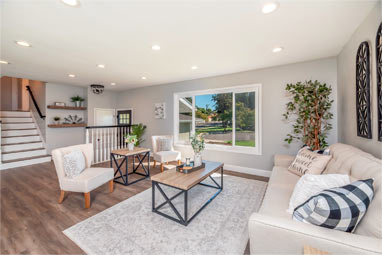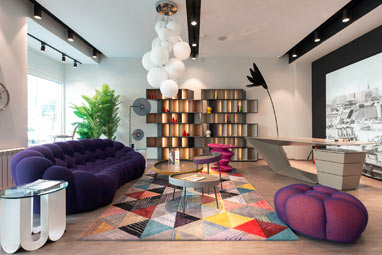Updated: January 25th, 2024
Home interior designing can easily be considered one of the most complicated projects. From figuring out what you need, to finalizing the layout and designs, selecting materials, and making a detailed project budget, it involves a lot of planning. Needless to say, you must estimate and calculate the home interior design cost and make a preliminary budget for the project. Because a detailed and minutely calculated project estimate and budget can help greatly during the execution. However, unless you consider all the direct and indirect expenses while budgeting, you may not be able to execute the project correctly and smoothly. A detailed project budget can help manage your expenses and complete the project smoothly.
However, estimating home interior design project cost is not easy, especially at the beginning. Because in the beginning, you may not have the clarity and not even know what kind of materials and finishes you want. Even though you have some idea of what you need, you may still be unsure about the costs involved in choosing a specific type of material.
Although a professional interior designer or a firm can figure it out to a great extent, they also need to have a lot of clarity from you. As a homeowner, you may have to put in a lot of effort in estimating and calculating the home interior design cost. Unless you know about the costs, you can’t make a practical and functional budget for the project. And that’s where the role of the professional interior designer becomes crucial. They have a very important role and can help plan, and prepare a budget that’ll work for you and help execute the project without increasing the cost.
Making a preliminary project budget
Calculating home interior design costs and making a functional budget can be overwhelming, but you have to do it anyway. Home designing and renovation involves lots of time, effort and money. And therefore, you can’t just start randomly and expect to get the best of the money you might spend on your project.
If you have a purchased new flat or an apartment and you are planning to get it designed and decorated correctly, then this is a must-check post for you.
Today in this post, I am talking about:
- How to estimate home interior design cost and make the project budget
- All the indirect expenses to consider while making a budget
- How to stay on track and complete the project within the budget
Designing or renovating a house may involve several tasks – from civil alterations to flooring, plumbing and electrical to painting and carpentry, it’s not going to be easy unless every job is planned and scheduled properly.
Let’s learn to plan, prepare and make a practical and functional budget for the project.
How to estimate the cost of home interior designing and make a preliminary budget
Estimating the cost of a home interior design project can be overwhelming for many homeowners and professionals.
But, I can help simplify the process.
One of the easiest ways to estimate the cost of any interior design project (home or office) is to define the scope of work. Scope of work (SOW) is basically the description of work involved in the project. It may also include a timeline, pricing and other specifications.
To begin with, define the work involved in your project, for instance:
- What’s the size of the house i.e. 3BHK, 850 sq ft carpet area
- Number of rooms or spaces that requires works
- Description of civil and plumbing-related jobs
- A detailed description of blocks/elements in each of the spaces
- False ceiling, if required
- Painting and wallpapers etc
Once you have each of these tasks and jobs defined, you will get a lot of clarity and that’ll help calculate the interior design cost and budget.
Detailed scope of work
The goal here is to define the job in different categories and then work down to individual blocks.
For instance, when we start budgeting for a home interior design project, we divide the work into the following categories/spaces.
- Civil and Plumbing (e.g. civil alteration, floor and wall tiling, countertops installation, sink, waterproofing on the floors and wall, bathroom fittings etc)
- Modular Kitchen
- Living and Dining
- Master Bedroom
- Parents Bedroom
- Guest Bedroom
- False ceiling (mostly a part of the project)
- Painting and wallpaper
- Miscellaneous (to list jobs that do not fit in the above categories)
Then we further list jobs involved in each of these categories and spaces, and that helps estimate the costs involved. Once you have the measurements of each of the blocks, you can easily make a budget for the project.
How to define the scope of work for a home interior design project?
Now that you have a broad idea of how to define the scope of work involved in an interior design project, you can get into detail.
Here’s how the detailed job can be defined in each of these spaces for 3 BHK flats with a 1050 sq ft carpet area.
| Blockwise scope of work | Size |
| Civil and Plumbing | |
| Granite kitchen countertop installation | 20 sq ft |
| Kitchen sink, tap and waste pipe installation | 1 pc |
| Kitchen floor and countertop wall tiling | 75 sq ft |
| Attached are bath floor and wall tiling | 216 sq ft |
| Common bath floor and wall tiling | 220 sq ft |
| Wall and floor demolition | 511 sq ft |
| Waterproofing in bathrooms | 200 sq ft |
| Bath fittings and accessories in both the washrooms | 2 units |
| Glass partitions in both the washrooms | 2 units |
| Master Bedroom | |
| Entertainment Panel with Bookshelves | 80 sq ft |
| Wardrobe | 40 sq ft |
| Box bed with side table | 1 unit |
| Study Desk | 21 sq ft |
| Parents Bedroom | |
| Bookshelves with TV unit | 22 sq ft |
| Wardrobe | 47 sq ft |
| Box bed with side table | 1 unit |
| Guest Bedroom | |
| Bookshelves | 42 sq ft |
| Wardrobe | 48 sq ft |
| Box bed with side table | 1 unit |
| TV Unit | 12 sq ft |
| Modular Kitchen | |
| Upper and lower units | 90 sq ft |
| Living and Dining | |
| Bar Unit Lower cabinets | 10 sq ft |
| Bar Unit Upper cabinets | 8 sq ft |
| Shoe cabinet | 6 sq ft |
| Service table | 8 sq ft |
| Storage cum crockery unit | 8 sq ft |
| Dining table and chairs (4 occupancies) | 4 seat |
| Window sitting with cushioning | 45 sq ft |
| Balcony | |
| Washing machine panel with utility storage on top | 27 sq ft |
| False ceiling and painting | |
| False ceiling (approx) | 1050 sq ft |
| Painting (approx) | 4200 sq ft |
| Wallpaper (approx) | 300 sq ft |
| Electrical | |
| LED spotlights | 50 units |
| Strip and profile lights (approx) | 50 meter |
While defining the scope of work, just think of all the elements and jobs you want. Add up everything in the scope and then work around it later to tweak and finalize the scope of work.
While defining the scope of work, just think of all the elements and jobs you want. Add up everything in the scope and then work around it later to tweak and finalize the scope of work.
The scope of work listed above has all the tasks and jobs that are to be performed in various rooms and spaces in the house during the design.
Calculate the block estimate and the budget

Now that you have a detailed project scope with all the jobs specified in it, it’s important to measure each of the spaces and blocks. For instance, just writing in the wardrobe in the master bedroom won’t help. You have to measure the space you have for the wardrobe. If you need upper cabinets above the wardrobe for extra storage, then measure that space as well and note it down.
This way, you will have a detailed measurement (even if it’s approximate for now) of all the jobs and elements. Once you have updated the sheet with all the measurements, you have to think of the kind of materials you wish to use and the finish you want.
Selection of materials
The selection of material and finish can hugely impact the overall budget for a home interior design project. For instance, you can get a 3BHK apartment designed and decorated for Rs. 16 – 17 lakh or less. And you can well spend above Rs. 20L to design and decorate the same 3 BHK apartment with premium quality materials and finish. There’s no right and wrong budget, it’s all about how much money you want to spend in designing your sweet home.
This can be tricky, but you have to have a tentative budget in mind. So, to begin with, you can estimate it at the rates of Rs. 1550 to 1650 per sq ft. If there is no civil work involved then you can bring the budget down. Similarly, if you feel 1550 is a little too much, you can estimate it at 1400 i.e. Rs. 1400×1050 sq ft=Rs 14.7 lacks. But, that may result in compromising some of the jobs or opting for materials that are a little cheaper than the best-branded materials.
There are many alternate options that are equally good and sometimes better than their branded peers. But the problem is that only a professional interior designer or firm can help you find such alternate options. However, we do not recommend compromising with hardware fittings and electrical accessories.
A lot goes behind the scenes and that’s why I always say that interior designers have a very crucial role to play in designing a beautiful and functional home or office. They put in a lot of effort and add lots of value in planning and executing the project.
Indirect interior design expenses are to be included in the budget
Apart from the direct expenses for the above job, many indirect expenses will come during the execution, like:
- Refurbishing/repairing of existing furniture
- Sofa and centre table
- Armchairs for the living, guest bedroom, study desk etc
- Floor lamps and chandeliers
- Table and chairs for the balcony area
- Painting, portraits, vases, figurines and other decorative elements
- Upholstery like curtains and blinds and fittings
- Rugs and carpets at select spaces
- Kitchen accessories like hobs, chimneys etc
- Home appliances like AC, Geysers, Fans etc
- Electrical expenses e.g. false ceiling wiring, MCBs, two-way switches, switchboards, new point for AC, dishwasher etc
- Door and window panelling and laminate changing
- Broadband and DTH connection
- Mosquito net installation
- Grill and outside lobby area painting
- Anti termite treatments
- Dismantling, moving and re-installation expenses for existing appliances like AC, geyser etc
- Packing and moving expenses to move your family from your current home to your new home.
Some of the indirect expenses are guaranteed to come during the execution and therefore it’s worth considering the ones that apply to your project. For example, if you are planning to bring two of the ACs from your existing house to this new house, then it involves dismantling, transportation and reinstallation.

Dismantling and installation itself will cost around Rs. 3000 per unit and add the cost of transportation. So, to dismantle, transport, and reinstall two AC units of from your current home to your new home, you may have to spend anywhere between Rs. 8-10K. So, it is important to budget for such indirect expenses well in advance.
How to adjust costs and stay within budget
One of the biggest challenges during the execution is to manage the money and stay on budget. As a professional, we even get stuck in situations where we end up buying materials at a higher price than estimated in the budget.
Sometimes, you will get into a situation that you might not have thought of initially. You may like to replace a unit, increase the size or change the specification and want more premium products or white goods. It’s normal and it happens in most projects.
There can be many reasons for overspending:
- The client picked the costliest option
- Unavailability of material we need
- Price rise or we ended up estimating less for a particular item
So how do we manage to stick with the initial project budget?
Contingency fund
However, this can be challenging and you may have difficulties managing the project within the specified budget. The solution is to add a contingency fund of around 10% of the total budget. This will be used as reserve cash to cover any additional expenses that may come during the project execution.
Well, we try to adjust it with other elements. However, if that’s not possible, you can use the contingency reserve fund to cover such unplanned expenses.
For example, let’s assume we had a budget of Rs. 10050 for the chandelier, and while visiting the store, the client may pick a chandelier that costs Rs. 12500. So the client will end up spending Rs. 2000 extra on one item. There are many such items like rugs and carpets, blinds and curtains, chimneys and hobs, geysers, security cameras etc.
And you can still manage to stay on budget by adjusting the costs in other blocks. All that you have to do is to analyze your spending mindfully. There will be items where you will spend more. So, you have to spend a little less than planned for some other items. But, you can’t just go overspending on each and every white good. Otherwise, you will end up spending more than you might have planned.
Concluding – the interior design budget and expenses
Estimating and calculating the cost of a home interior design budget can be overwhelming for many homeowners. However, there is a basis thumb rule of calculating the initial budget which can be based on your scope of work and carpet area. So, to begin with, you can estimate it at around Rs. 1400 per sq ft, considering you want the best quality plywood, laminates, hardware fittings, false ceiling, wallpapers and Royal shine paintings on the wall and ceiling.
If you are okay with the preliminary budget then you can move forward. However, if it does not fit your budget you should discuss it with your interior designer. And get the requirements and specifications tweaked and adjusted. They can finalize the scope of work, adjust the material specification and make the budget work for you.
Have you completed a home interior design project recently?
What do you think one should consider while estimating the home interior design expenses and budget?
Share your thoughts, hacks and ideas by commenting below.
If you have any questions related to calculating the cost for a home interior design project then feel free to ask in the comment section below.
Happy home decorating!







Pingback: How to do Perfect Home Interior Design Planning in 9 Easy Steps
Pingback: Home Interior Design Checklist: Plan, Track and Stay within Budget
Pingback: The Ultimate Guide to Start Interior Design Business in India - ServiceSutra